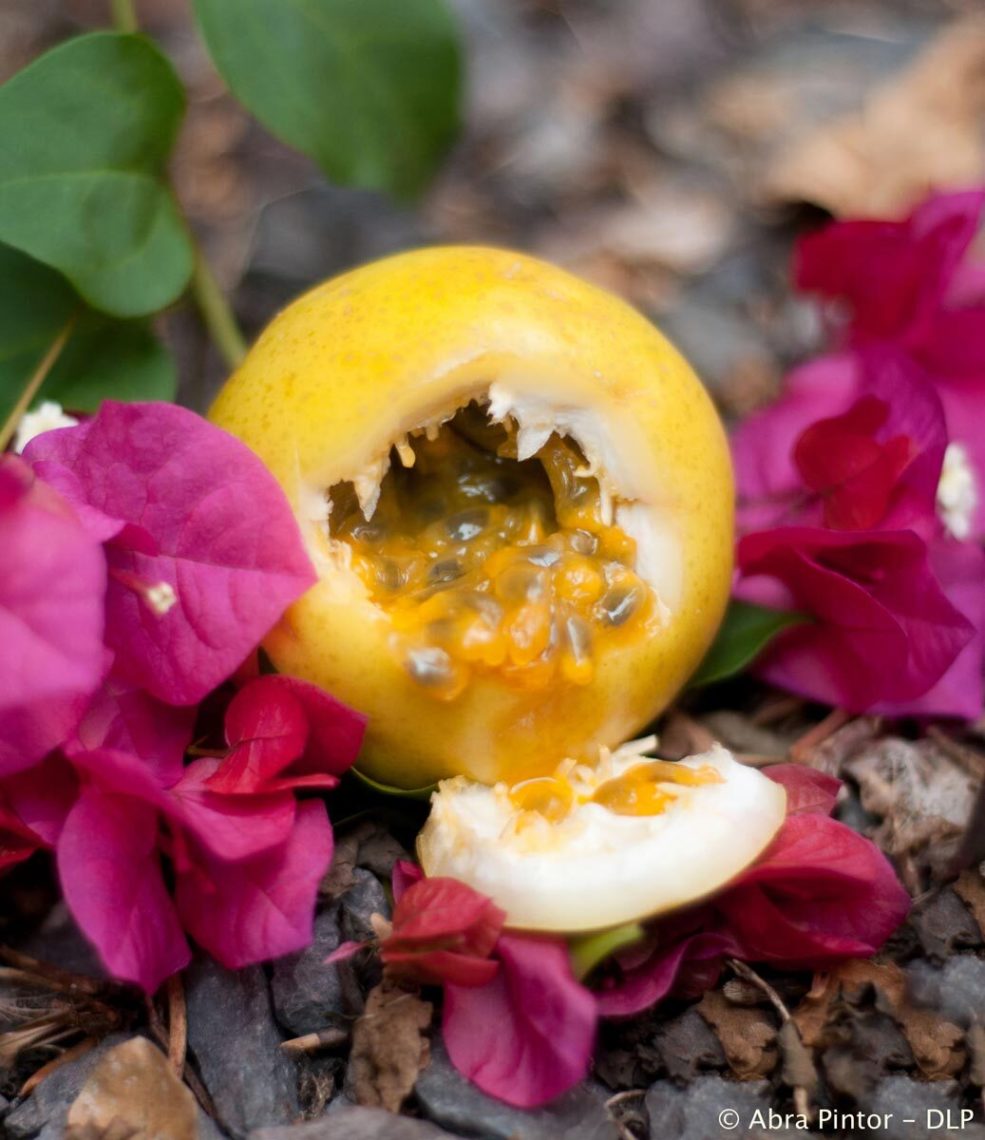
This is a shipping order. Switch to local pickup?
This is a pickup order. Switch to shipped?

At the Farmer’s Markets and Street Fairs I set up at I have one question that is asked of me more than anything else. What is Lilikoi?
Passiflora edulis forma flavicarpa is the scientific name for the yellow Passion Fruit most frequently grown in Hawaii. It is a small roundish fruit that grows on a vine, has many seeds, and is used most often to make juice. Passion Fruit are anywhere from 1 and 1/2 – 3″ wide, have a smooth yet tough rind, and range in color from dark purple with white specks to pale yellow or pumpkin colored. When you cut them open they are filled with little sacs containing its pulpy juice as well as many, many black seeds. The taste of the fruit ranges from sweet/tart – tart in flavor and is very aromatic.
The yellow form of the passion fruit plant takes 1-3 years to begin bearing fruit. Once the flowers have been pollinated it will take 70-80 days before you have fruit. As the fruit ripens, it falls of the vine. The fruit is still good when it starts to get wrinkled and brown spots. Each of the yellow passion fruit holds from 1-3 tablespoons of actual juice.
I like to tell people that the word lilikoi is pronounced like the girl’s name Lilly and the fish, Koi. Put the two together and you get Lili – koi.
To eat this tropical fruit, you need to cut open the rind that will lead you to the juicy flesh and seeds.
The seeds are edible and are high in magnesium, so you can eat them together with the flesh and juice.
The white film separating the rind is edible but it’s very bitter.
Passion fruit is highly versatile and can be used in many ways. A lot of people enjoy the fruit raw and eat it straight out of the rind.
Drinks: It can be squeezed through a sieve to make juice which can be added to cocktails or to make flavored water. Our most frequently downloaded cocktail recipes are our:
Desserts: Passion Fruit is frequently used as a topping or flavoring for cakes, custards and other desserts. The dessert recipes that are downloaded most often are:
Sides & Main Courses: Lilikoi is commonly used to make salad dressing, sauces and marinades. Here are our most commonly downloaded recipes:
Tabouli Passion Fruit Salad, &
Passion Fruit Ceviche with Avocado
In the 16th century, when Christian missionaries landed in South America, the passion flower was the plant that signified their success. They named it “Flor de las cinco llagas” or “flower of the five wounds” after its distinctive purple flower. They believed that the flower symbolized the death of Christ; the five petals represented the disciples (minus Peter and Judas), the corona symbolizes the crown of thorns around Christ’s head, and other features were a symbol of the wounds, nails, and whips used on Christ.
Today, passion fruit is grown nearly everywhere in the tropical belt but known by a variety of different names. Its common name is Maracuya in Ecuador and Brazil, Parcha in Venezuela, Lilikoi in Hawai’i, and Chinola or Parchita in Puerto Rico.
Passion Fruit was introduced into Hawaii in 1880 and it quickly became popular in home gardens. It naturalized in Hawaii’s almost perfect climate and, by 1930, could be found wild on all the islands of the Hawaiian chain.
Pick-up location:
77-6541 Princess Keelikolani Dr.
Kailua Kona, HI 96740
Mailing address:
P.O. Box 2292
Kailua Kona, HI 96745-2292
© 2025 Da Vine Foods™